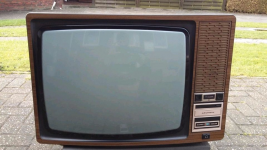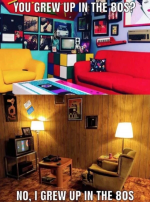The European Parliament has shared a press release confirming that it's settled on making a common charger mandatory for a range of mobile devices.
Go to post
Go to post
I was thinking about this the other day as well.
An open standard is a must so undue costs are not forced onto everything. Apple will have to get on board or get out of town and I doubt they want to lose the EU market. If USB-C can be used without royalty issues(I have no clue) that's great. Presently it has evolved to a pretty nice standard.
Some kind of definitive process for upgrading down the road that includes notification for manufacturers and deadlines to implement. Gotta keep the playing field level for all. The process should also involve input from the industry for recommendations on moving on to the next standard.
Similar to most USB and HDMI-type ports it would be recommended to use the same form for as long as possible and require backward compatibility. I agree with @Brian_B about PS/2, we don't need things long past overdue to be abandoned but there should be a process for keeping as long as all or most agree and then moving on.
I think you're spot on. I won't miss formats changing every year or two. That gap before 3.0 got pretty crazy between standard, micro, and mini. I think there was another one that I'm missing but not sure.I wonder if this will just result in an "everything is USB-C" type approach like we have seen in other areas across the industry.
Just like how we kind of got to USB 3 and then the naming mostly stayed there and they just started adding stupid subspecification names that made less sense than the previous version increments.
Every future revision of USB will now be called USB-C.
USB-C 2.0
USB-C 40G
USB-C 220V
Etc. Etc.
I agree. I've got boxes of cables filling the closet in the cave that are from pre USB 3.0 that is just filled with crap like that (plus misc analog audio adapters/splitters/etc.) and will be getting tossed soon. I did the same at my day job about a month ago.Quite frankly I'm annoyed by all the variations of connectors even just within USB. Why the F did we have like 5 different connectors doing the exact same thing? mini usb, micro usb, usb-A usb-b, micro3. It was time to standardize this. I'd also include printers.
And I hope they don't just leave a loophole where including an adaptor is enough.
Quite frankly I'm annoyed by all the variations of connectors even just within USB. Why the F did we have like 5 different connectors doing the exact same thing? mini usb, micro usb, usb-A usb-b, micro3. It was time to standardize this. I'd also include printers.
And I hope they don't just leave a loophole where including an adaptor is enough.
Yeah, the mini version made some sense, for devices that phyisically didn't have the space for an USB-A connector. But the micro USB is slightly wider and slimmer than mini USB, while being 10 times more fragile and prone to contact issues. It is the worst "evolution" ever.Certainly having a mini version made sense, for devices that were small, but why both a mini and a micro? Especially when they were so close to each other in size?
But USB-B? That made no sense at all. It is rarely used outside of printers, I think I've had a few early cable modems that used USB-B, but nothing else. And it is the cable that you can never find when you need one, but keeps turning up in droves when you don't need it.Also, what was the point of USB-B connectors? Why not just make them A, male or female on both sides? It just over-complicated things.
There is no problem with single orientation connectors, just give a visual cue for the orientation and perhaps a physical guide.USB-C is really the design they should have gone with from the start, a universal (well, at least two-way) orientation connector.
I bet the logic behind it was that you shouldn't just blindly connect things left right and center, so they forced you to look at what you are doingThe little dance of trying to insert the USB-A plug, failing, rotating it around, trying again, failing and then rotating it back and finally succeeding got old as soon as it hit the market already in 1996.
USB-A has both of these and doesn’t prevent it me from always being wrong. Granted, they were engineered in an awful manner. The physical guide is internal to the connector, and the visual/physical cue (the USB logo) is often molded in the same color as the rest of the connector and hard to see, or omitted by various third parties.There is no problem with single orientation connectors, just give a visual cue for the orientation and perhaps a physical guide.
Don't forget S-video!! (same exact port as PS/2)USB-A has both of these and doesn’t prevent it me from always being wrong. Granted, they were engineered in an awful manner. The physical guide is internal to the connector, and the visual/physical cue (the USB logo) is often molded in the same color as the rest of the connector and hard to see, or omitted by various third parties.
I liked that USB A was plug and play, and compact, but DB9 and PS/2 were the better connectors in respect to usability to be honest.
A visual cue is only a visual cue if it is visible without having to peer down the both the connector and the plug to be sure.USB-A has both of these
and doesn’t prevent it me from always being wrong. Granted, they were engineered in an awful manner. The physical guide is internal to the connector, and the visual/physical cue (the USB logo) is often molded in the same color as the rest of the connector and hard to see, or omitted by various third parties.
I liked that USB A was plug and play, and compact, but DB9 and PS/2 were the better connectors in respect to usability to be honest.
They are all actually mini-Din connectors.Don't forget S-video!! (same exact port as PS/2)
I loved S-Video back in the day. I upgraded to gold-contact high-grade cables for everything(PC/Playstation 1-2/DVD players) I had back then and used a nice switch box to connect to one of the last model Trinitron's. For the time, the picture was amazing and my PC's were able to display at 1024x768/60hz on it. Good times.Don't forget S-video!! (same exact port as PS/2)
S-Video was barely better than Composite, RGB was the real deal, most TVs could recieve RGB signal on scart, basically turning them into monitors.I loved S-Video back in the day. I upgraded to gold-contact high-grade cables for everything(PC/Playstation 1-2/DVD players) I had back then and used a nice switch box to connect to one of the last model Trinitron's. For the time, the picture was amazing and my PC's were able to display at 1024x768/60hz on it. Good times.
S-Video was barely better than Composite, RGB was the real deal, most TVs could recieve RGB signal on scart, basically turning them into monitors.


Still rockin' S-Video over here. My SNES, Super Famicom, N64, Gamecube, and Saturn all use S-Video on my CRT TV. I also previously used S-Video with PS1 and Dreamcast. In the 2000s I upgraded Dreamcast to VGA and it's been on that ever since. For PS2 I used Component cables. Wish I could've used Component with GCN but I laughed at Nintendo's $30 prices for the cables (there were no 3rd-party ones). Joke's on me cuz in the following 20 years the price range of those things ha been $200-$300. I could and did use Component with GCN games on Wii, but I've seen stuff online that showed that GCN's Component video output quality is better than Wii's. Ah well. X360 was the first system I had with HDMI output. My Neo-Geo C-MVS supports S-Video, Composite, Component, and RGB/SCART. I have the cables for all of those, but I am currently using Component. My NES and Genesis are the only systems on Composite.I loved S-Video back in the day. I upgraded to gold-contact high-grade cables for everything(PC/Playstation 1-2/DVD players) I had back then and used a nice switch box to connect to one of the last model Trinitron's. For the time, the picture was amazing and my PC's were able to display at 1024x768/60hz on it. Good times.
